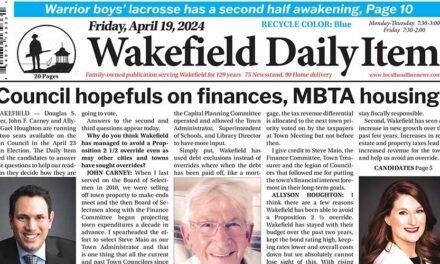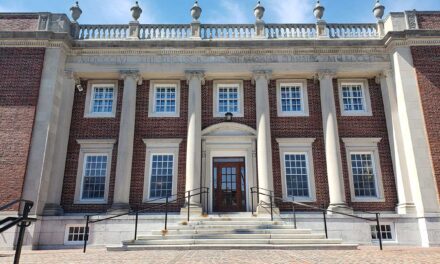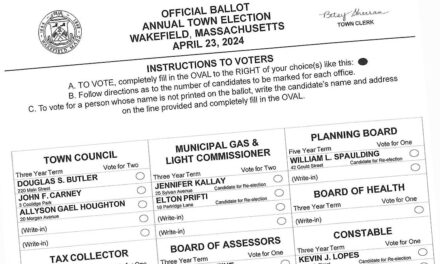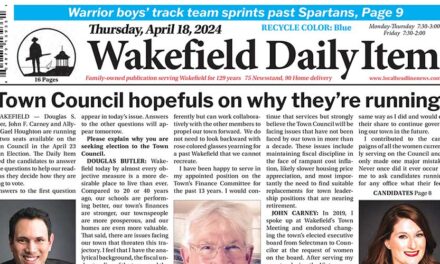Published in the March 7, 2019 edition.
BOSTON — While many Americans struggle to afford their prescription drugs, a new survey of retail prices of commonly-prescribed medications found patients can save hundreds, even thousands of dollars in some cases by shopping around at pharmacies within their communities.
MASSPIRG, Health Care For All, state Senator Jason Lewis and state Representative Christine Barber and others called for prescription drug pricing reform as MASSPIRG released their report, The Real Price of Medications: A Survey of Pharmaceutical Prices, revealing a wide variation in the retail pricing of prescription drugs by pharmacies large and small, urban and rural.
The report found that on average the median or typical prices for the drugs surveyed was almost nine times higher than the lowest price found for the same medicines. In Massachusetts, for the medication esomeprazole, a generic drug to treat gastro reflux, the typical price was 1,400 percent higher than the lowest price. “This is an awful deal: our medications don’t work any better when we pay more for them,” said Deirdre Cummings, legislative director for MASSPIRG.
Nearly 1 in 4 Americans struggle to afford their prescription drugs primarily because of high prices. In Massachusetts, drug spending is the second highest category of spending growth in our health care system.
Senator Jason Lewis and Representative Christine Barber outlined their new bill, cosponsored by 56 lawmakers, An Act to Ensure Prescription Drug Cost Transparency and Affordability Act (H1133/ S706) to protect consumers and rein in runaway drug prices.
“Out-of-control pharmaceutical costs are not only a major driver of increased insurance premiums, but also a threat to the quality and affordability of healthcare for economically-vulnerable people across Massachusetts, like senior citizens and low-income families,” said Senator Jason Lewis, the Senate sponsor of the bill. “This legislation is a vital first step towards improving transparency and controlling drug costs.”
The legislation uses a number of strategies that include providing transparency around the underlying costs to produce prescription drugs; restraining abuses of pharmacy benefit managers (PBMs); authorizing the Health Policy Commission to set upper payment limits for unreasonably high-priced drugs; requiring pharmacists to inform consumers if purchasing a drug at the retail price would be cheaper than using health insurance; providing tools to strengthen MassHealth’s ability to negotiate lower drug prices; and permanently authorizing and funding “academic detailing,” an evidence-based prescriber education program.
“This report from MASSPIRG shows the rising costs and lack of transparency over how prescription drugs are priced, which creates a burden on families and small businesses, as well as the state’s budget for MassHealth,” said Rep. Barber, the legislation’s lead House sponsor. “Our bill aims to make prescription drugs affordable and available for Massachusetts consumers by increasing transparency for drug pricing and making the pharmaceutical industry accountable, as we all work to control health care costs.”
“The concept of shared responsibility has been fundamentally important to the health care success story in Massachusetts. Hospitals, insurers, businesses, providers, and consumers have all made meaningful sacrifices to ensure the people of the Commonwealth have the coverage they need and that we work to bring down costs. Each of these entities has put some real skin in the game, but the pharmaceutical industry has not. It is time that they step up and be part of the solution,” said Amy Rosenthal, executive director of Health Care For All.
U.S. PIRG Education Fund surveyed more than 250 pharmacies in 11 states, including Massachusetts, for cash prices on 12 common drugs. Researchers found that consumers face a dizzying array of price differences:
● Patients could save from $102 – $5,400 a year between minimum and median prices of the selected medications by shopping around.
● Prescription drug price variation appeared disconnected from where the medicines were sold in urban and rural locations across many states; the median price for the surveyed brand and generic drugs varied an average of 892 percent from the cheapest available price.
● Switching from brand name drugs to generic alternatives can help save money. For example, switching from the brand acid reflux medication Nexium to its generic could save a patient an estimated $756 annually.
● Brand name drugs did not adjust to competition from generic drugs, even years after they entered the market. For instance, patients who switch from branded Lipitor to its generic could save an estimated $3,927 annually.
● Large chain pharmacies tend to have higher prices than their small chain or independent counterparts, despite having more leverage in the marketplace. Eight of the 12 drugs in the survey had higher median prices of 8.8 percent to 840 percent at large chains compared to small or independent pharmacies.
● In Massachusetts, the survey found that Atorvastatin (the generic of Lipitor, a blood pressure medication) had a price variation of 1100 percent from the typical price to the lowest. In this case, shopping around for the lowest price could save patients $1200/year.




